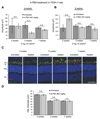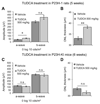The molecular and cellular basis of rhodopsin retinitis pigmentosa reveals potential strategies for therapy
- PMID: 29042326
- PMCID: PMC5779616
- DOI: 10.1016/j.preteyeres.2017.10.002
The molecular and cellular basis of rhodopsin retinitis pigmentosa reveals potential strategies for therapy
Abstract
Inherited mutations in the rod visual pigment, rhodopsin, cause the degenerative blinding condition, retinitis pigmentosa (RP). Over 150 different mutations in rhodopsin have been identified and, collectively, they are the most common cause of autosomal dominant RP (adRP). Mutations in rhodopsin are also associated with dominant congenital stationary night blindness (adCSNB) and, less frequently, recessive RP (arRP). Recessive RP is usually associated with loss of rhodopsin function, whereas the dominant conditions are a consequence of gain of function and/or dominant negative activity. The in-depth characterisation of many rhodopsin mutations has revealed that there are distinct consequences on the protein structure and function associated with different mutations. Here we categorise rhodopsin mutations into seven discrete classes; with defects ranging from misfolding and disruption of proteostasis, through mislocalisation and disrupted intracellular traffic to instability and altered function. Rhodopsin adRP offers a unique paradigm to understand how disturbances in photoreceptor homeostasis can lead to neuronal cell death. Furthermore, a wide range of therapies have been tested in rhodopsin RP, from gene therapy and gene editing to pharmacological interventions. The understanding of the disease mechanisms associated with rhodopsin RP and the development of targeted therapies offer the potential of treatment for this currently untreatable neurodegeneration.
Keywords: CRISPR; Endocytosis; GPCR; Mutation; Neurodegeneration; Protein misfolding; Protein traffic; Proteostasis; Retinal dystrophy; Rhodopsin; Therapy.
Copyright © 2017. Published by Elsevier Ltd.
Figures






References
-
- al-Jandal N, Farrar GJ, Kiang AS, Humphries MM, Bannon N, Findlay JB, Humphries P, Kenna PF. A novel mutation within the rhodopsin gene (Thr-94-Ile) causing autosomal dominant congenital stationary night blindness. Human mutation. 1999;13:75–81. - PubMed
Publication types
MeSH terms
Substances
Grants and funding
LinkOut - more resources
Full Text Sources
Other Literature Sources
Medical
Research Materials

